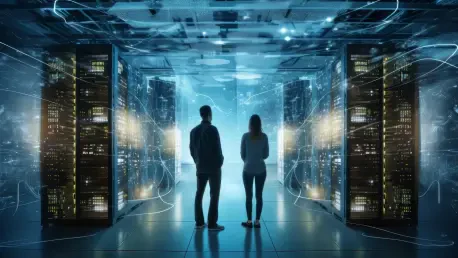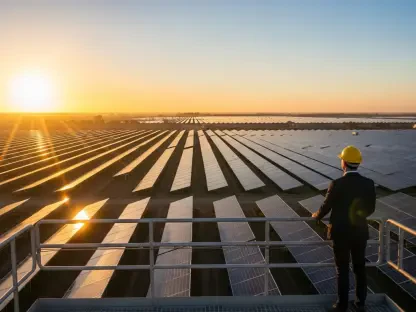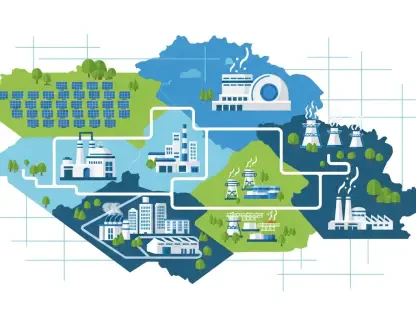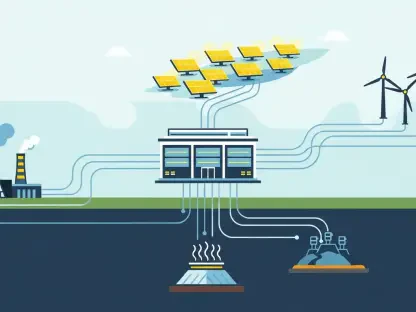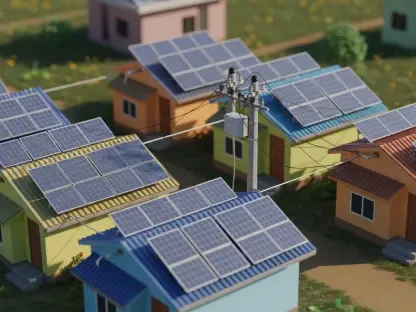The soaring demand for artificial intelligence and IT services is reshaping the landscape of data centers, leading to significant shifts in power consumption patterns. With the industry’s rapid transformation, a crucial element of analysis is how the sector can overcome power challenges while ensuring sustainable growth. This assessment delves into the evolving trends, consumption data, and future prospects that are pivotal in navigating data center expansion effectively.
Analysis of Current Industry Dynamics
Data centers have witnessed remarkable growth, evidenced by a substantial increase in the Data Center Physical Infrastructure (DCPI) market. This marks a pivotal shift in the digital realm, where hyperscalers and colocation providers continue to enhance their capacities to meet burgeoning AI infrastructure demands. The infrastructure’s evolution, characterized by the adoption of liquid cooling and high-density power racks, signals a fundamental change in power distribution and thermal management strategies.
The role of AI and machine learning cannot be overlooked, with these technologies propelling rack power densities from 15 kW/rack to anticipated levels of 60-120 kW/rack. Despite sustainability hurdles, the momentum in AI infrastructure investment remains unabated, with predictions suggesting accelerated servers will account for a significant portion of the industry’s infrastructure expenditure in the coming years.
Power Generation and Environmental Footprint
The compatibility of national grids with the expanding data center needs is under scrutiny. The U.S. Department of Energy indicates that data centers’ consumption of electricity had risen to 4.4 percent of total U.S. power use, with expectations to climb as high as 12 percent by 2028. This highlights a pressing concern as data center electricity consumption increased dramatically over recent years.
Environmental sustainability challenges are at the forefront, driven by reliance on fossil fuels such as coal, oil, and gas. The sector is gradually shifting toward more sustainable energy sources, embracing wind, solar, and even the resurgence of nuclear power through small modular reactors. Notably, some major players in the hyperscale market are exploring their own nuclear solutions to ensure a secure energy supply.
Addressing Electricity Distribution Constraints
The physical delivery of power via national grids bridges the supply and demand of electricity crucial to data center operations. Past electricity grid failures, such as in Spain, have underscored the challenges faced in maintaining the delicate balance required for stable electricity delivery. The rising importance of GPUs further accentuates power budget issues, dramatically impacting the sustainability across the hardware supply chain.
A closer look at individual components like GPUs paints a nuanced picture of power usage, illustrating that the transition from CPU-based to GPU-based computation is reshaping the power landscape. This has significant implications for data center design and sustainability strategies, compelling industry stakeholders to recalibrate power consumption and distribution frameworks.
Pathways to Enhanced Efficiency
Efforts to optimize data centers revolve around minimizing the Power Usage Effectiveness (PUE) ratio, a concept introduced by The Green Grid in 2007. Energy efficiency remains a pressing goal, with strategies focusing on cutting carbon emissions through renewable energy adaptation. Solutions such as air-cooling present different efficiencies based on the load and geographical considerations, thus affecting operational decision-making.
Balancing cooling efficiency, geographical proximity, and power budget optimization, innovative technology like Pure Storage’s DirectFlash demonstrates the path forward in rationalizing power consumption across data center operations. These optimizations are vital yet challenging exercises necessitating a multifaceted approach to sustain growth and performance.
Strategic Directions and Recommendations
When considering strategic directions for the industry, evidence emerged suggesting national realignment in energy policy and practice as paramount. A robust shift from fossil fuel reliance and a strong emphasis on renewable sources can be game-changers for national aspirations in energy independence. It calls for integrated efforts involving government agencies, energy providers, and technological innovators.
Ensuring a sustainable future for the data center industry requires comprehensive electricity supply chain management, tapping into new energy technologies, and fostering collaborative approaches to enhance operational efficiencies across the board. National governments and industry stakeholders need to align and mobilize resources effectively to answer rising data center demands.
In summary, managing power consumption remains a cornerstone to perpetuating sustainable growth within the data center domain. Industry actors are constantly recalibrating their strategies to integrate innovative solutions across infrastructure and power management to propel this evolution. By means of informed decision-making and collaborative partnerships, the sector stands at the threshold of a sustainable and dynamic transformation.
